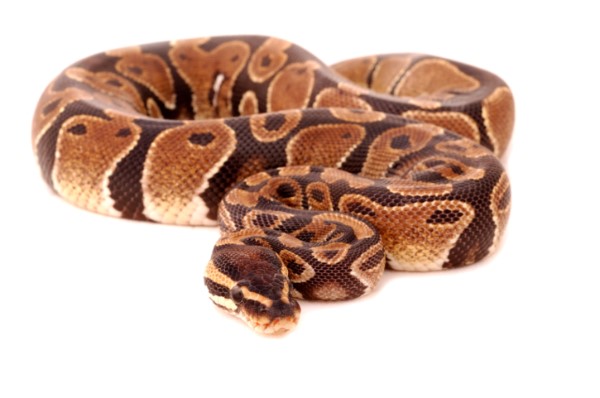Common Reasons for Surrender
The number one reason that rainbow boas are surrendered is that the snake grew too big and the owners felt they couldn’t handle him anymore. The advantage to owning a ball python or rosy boa is their smaller size.
Pros
Some people feel it is a status symbol to own a snake. Others truly enjoy the exotic look of the python and boa and the fact that they are from another continent makes the snake more interesting. The pythons and boas have a slower metabolism and are more low-key when you handle them. They will rest in your hands and are actually an easier pet to handle than the king or milk snake, which are American snakes. In short, pythons and boas are special exotic snakes, easy to care for, low maintenance, and come in a variety of colors.
Cons
The rainbow can get big, and snakes are more difficult for a beginner to handle as they get larger. While some family members may think it’s cool to feed a snake a frozen mouse, others object to a dead rodent in the freezer next to the family’s chicken and broccoli.
Diet
Diet is important and all three of these snakes eat mice and rats. Place the frozen mouse in a bowl of hot water and put it on top of the snake’s cage so the snake has time to pick up the scent of the mouse. The snake may flick her tongue because she smells with her tongue. Always give the snake extra water after feeding so she has enough drink to wash down the meal. A cereal bowl filled three quarters with water is sufficient inside the tank.
Exercise
The ball python, rosy boa, and rainbow boa (a boa species is pictured at right) like to burrow under their bedding, which gives them enrichment and exercise. Some people take their snake out of the tank to handle him to give him some exercise. A snake’s typical day is sitting under a rock, so he does not move around a lot in his natural habitat unless he is ambushing prey.
Possible Health Issues
Sometimes a snake may have a respiratory issue, which will be more pronounced during feeding. Sometimes your snake may shed only partially. (See grooming for more details).
The main health issues for snakes usually have to do with heating. Be sure your tank is set up with a heat lamp on one side, not in the middle, so your tank has a warm side and a cool side.
Housing
You will need a 20- to 50-gallon tank that is set up with a heat lamp (also called a dome light) on one side of the tank so your snake has a hot side and a cool side. Reptiles have to thermal regulate themselves to keep their bodies balanced. They can go back and forth between the warm and cool sides to find the right balance. This goes for any snake. Boas and pythons will want a tank that is equipped with a hiding cage, heat lamp, basking rock, branches or sticks to climb on (preferably one leaning at an angle toward the heat lamp). Most boas and pythons spend their lives on the rainforest floor or sitting in a burrow somewhere in the dark. The best bedding in bottom of cage is Aspen.
Branches should be set up so the snake can climb to get closer to the light. A basking rock should be placed under the lamp so the snake can bask in the heat on the rock.
Grooming
Your python (pictured on left) or boa will need a water dish the size of a cereal bowl inside his tank. The cereal bowl filled with three-quarters water serves three purposes: water to drink, a place to cool down, and help in shedding. When a snake is about to shed, she will need a little more humidity to help her shed so the skin comes completely off. If your snake sheds only partially, you can prepare a rubber container with plastic holes at the top for air, fill it partway with lukewarm water, and place your snake inside. Sometimes the snake can be left overnight, but usually the snake will shed her skin completely within a few hours with the help of the water dish.
Training
If you handle your snake regularly, at least a few times a week, she will become compliant and increasingly easier to handle.
Entertainment
Snakes are happy with climbing branches, bedding, hiding boxes, and caves. If your snake can move around a little bit, he’s good.
ADDITIONAL RESOURCES
For interactive discussion forum go to www.herpcenter.com
Search for your local Herpetology Club such as one in Lancaster, Pennsylvania www.lancasterherp.org
http://www.reptilerescuealliance.org/
The Great Big Book of Snakes and Reptiles by Barbara Taylor and Mark O’Shea
We want to thank Jesse Rothacker, president of Forgotten Friend, Lancaster, Pennsylvania, for help with this profile.




